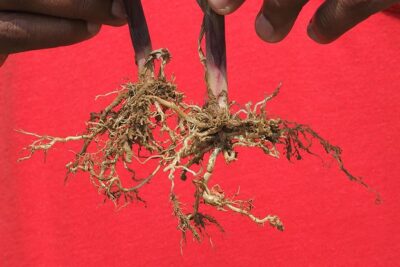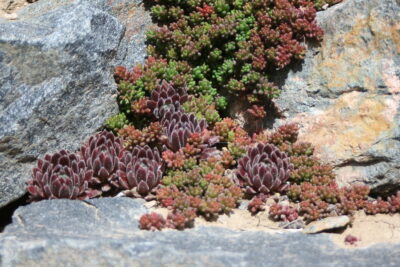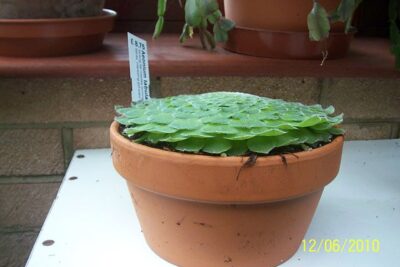
Fast-Spreading and Prolific Succulents: A Guide to Rapid Propagation

Succulents have become increasingly popular in recent years due to their unique beauty and low-maintenance nature. These plants, known for their fleshy leaves and ability to store water, come in a wide variety of shapes, sizes, and colors. One of the most fascinating aspects of succulents is their ability to propagate quickly and easily. This article will explore the world of fast-spreading and prolific succulents, providing a guide to their rapid propagation.
We will delve into the various methods of propagating succulents, including leaf cuttings, stem cuttings, and division. We will discuss the ideal conditions for successful propagation and provide tips for beginners. Additionally, we will explore some of the most popular fast-spreading succulents, such as the Jade plant (Crassula ovata) and the Mother of Thousands (Kalanchoe daigremontiana). By the end of this article, readers will have a comprehensive understanding of how to propagate these fascinating plants and create a thriving succulent collection.
- Use stem or leaf cuttings to propagate succulents quickly
- Remove lower leaves from stem cuttings and let them callous before planting
- Place leaf cuttings in well-draining soil and mist occasionally to encourage root growth
- Provide bright, indirect light and warm temperatures for optimal succulent propagation
- Water sparingly to prevent rot and ensure the succulents are not overwatered
- Use a balanced fertilizer to promote healthy growth and faster propagation
- Keep pests at bay by regularly inspecting and treating the succulents
- Transplant propagated succulents into their own pots once they have established roots
- Share the joy of succulent propagation by giving away cuttings to friends and family
- Frequently Asked Questions
Use stem or leaf cuttings to propagate succulents quickly
If you're looking to rapidly expand your collection of succulent plants, propagation through stem or leaf cuttings is a fantastic method to achieve that. This technique allows you to create new plants from existing ones, ensuring a fast and efficient way to grow your succulent family.
Before we delve into the step-by-step process of propagating succulents, it's important to understand the two main types of cuttings you can use: stem cuttings and leaf cuttings.
Stem Cuttings
Stem cuttings involve taking a portion of the stem from a mature succulent plant and encouraging it to grow roots and develop into a new plant. This method is particularly suitable for succulents with long stems, such as Echeveria or Sedum.
- Select a healthy and mature stem from the parent plant.
- Using a clean and sharp knife or pair of scissors, make a clean cut just below a node. A node is a small bump on the stem where leaves or branches emerge.
- Allow the cutting to dry and callous over for a few days. This step is crucial to prevent the cutting from rotting when planted.
- Prepare a well-draining potting mix by combining equal parts of perlite, coarse sand, and potting soil.
- Plant the stem cutting into the potting mix, burying the cut end about an inch deep. Ensure the cutting is positioned upright.
- Place the pot in a bright location, but avoid direct sunlight as it may scorch the cutting.
- Water the cutting sparingly, allowing the soil to dry out between waterings. Overwatering can lead to root rot.
- After a few weeks, you should start noticing new growth and roots forming. Once the roots are established, you can transplant the new succulent into its permanent pot.
Leaf Cuttings
Leaf cuttings involve removing individual leaves from a mature succulent and coaxing them to sprout roots and eventually develop into a new plant. This method works well for succulents with fleshy, plump leaves, such as Aloe or Crassula.
- Gently twist or cut a healthy leaf from the parent plant, making sure to include the entire leaf, including the base.
- Allow the leaf cutting to dry and callous over for a few days. This step is crucial in preventing the leaf from rotting.
- Fill a small container with well-draining potting mix, such as cactus mix or a blend of perlite and peat moss.
- Place the leaf cutting on top of the potting mix, ensuring the base of the leaf makes contact with the soil.
- Mist the cutting with water to provide moisture without saturating the soil.
- Keep the container in a warm and bright location, but avoid direct sunlight as it may scorch the delicate leaf.
- Over time, tiny roots will emerge from the base of the leaf, followed by a small rosette of new growth.
- Once the new plant has developed several leaves and a strong root system, you can carefully transplant it into its own pot.
By following these propagation methods, you'll be able to quickly and successfully expand your succulent collection. Remember to be patient, as it may take some time for the cuttings to establish roots and grow into mature plants. With a little care and attention, your newly propagated succulents will flourish and bring joy to your indoor or outdoor spaces.
 Can Succulent Leaves Regrow Once They Drop?
Can Succulent Leaves Regrow Once They Drop?Remove lower leaves from stem cuttings and let them callous before planting
One of the most effective ways to propagate succulents is through stem cuttings. To do this, you will need to carefully remove the lower leaves from the stem. This can be done by gently twisting or pulling them off.
Once you have removed the lower leaves, it is important to let the cut end of the stem callous over. This helps to prevent rot and promotes successful rooting. Simply place the cuttings in a dry location and let them sit for a few days to a week, until a callus forms.
Plant the calloused stem cuttings in well-draining soil
After the stem cuttings have calloused, it is time to plant them. Use a well-draining soil mix specifically formulated for succulents. This type of soil allows excess water to flow out quickly, preventing the roots from becoming waterlogged.
Make a small hole in the soil with your finger or a pencil and gently place the calloused end of the stem cutting into the hole. Be careful not to bury the entire stem, as this can lead to rot. Leave the top portion of the stem exposed above the soil.
Provide the right amount of sunlight and water
Succulents thrive in bright sunlight, so it is important to provide them with the right amount of light. Place your newly planted stem cuttings in a location that receives bright, indirect sunlight. Avoid placing them in direct sunlight, as this can cause sunburn.
When it comes to watering succulent cuttings, it is important to strike a balance. Overwatering can cause the cuttings to rot, while underwatering can lead to dehydration. As a general rule, water the cuttings when the top inch of soil feels dry. Be sure to water the soil directly, avoiding getting water on the leaves or stems.
Be patient and watch your succulent cuttings grow
Propagation through stem cuttings can take some time, so it is important to be patient. As the weeks go by, you will start to see new growth emerging from the stem cuttings. This is a sign that the cuttings have successfully rooted and are establishing themselves.
 Can Succulent Leaves Grow Roots When Planted in Soil?
Can Succulent Leaves Grow Roots When Planted in Soil?Continue to care for your propagated succulents by providing them with the right amount of sunlight, water, and occasional fertilizer. With time, you will have a collection of fast-spreading and prolific succulents, adding beauty and variety to your garden or indoor space.
Place leaf cuttings in well-draining soil and mist occasionally to encourage root growth
When it comes to propagating succulents, one of the fastest and most prolific methods is through leaf cuttings. This technique allows you to create multiple new plants from just a single leaf, making it an efficient way to expand your succulent collection.
To start the process, choose a healthy leaf from your succulent plant. Gently twist or cut the leaf off the stem, making sure to keep the entire leaf intact. It's important to let the cut end of the leaf callus over for a few days before planting it.
Once the leaf has callused, you can plant it in well-draining soil. Succulents thrive in porous soil that allows excess water to drain quickly, preventing root rot. You can use a specialized succulent soil mix or create your own by combining regular potting soil with perlite or coarse sand.
Make a small hole in the soil with your finger or a pencil and place the leaf cutting into it, ensuring that the cut end is in contact with the soil. Gently press the soil around the base of the leaf to secure it in place.
After planting, it's essential to mist the soil occasionally to provide moisture for root growth. Succulent leaves have the ability to absorb water through their pores, facilitating the development of new roots. However, be cautious not to overwater, as succulents are prone to rotting if their roots are constantly wet.
Place the potted leaf cuttings in a bright location, but avoid direct sunlight, as it can scorch the delicate leaves. A spot near a window with filtered light or under grow lights is ideal.
 Can Succulent Leaves Regrow Once they Fall Off?
Can Succulent Leaves Regrow Once they Fall Off?Within a few weeks to a couple of months, you will start to notice tiny roots emerging from the base of the leaf. This indicates that successful propagation is taking place. At this point, you can gradually reduce the frequency of misting and begin watering the plant from the base, allowing the soil to dry out between waterings.
Once the new plant has developed a sufficient root system and a small rosette of leaves, you can transplant it into a separate pot or directly into your garden. Remember to provide the new succulent with the appropriate care, including adequate sunlight, well-draining soil, and regular watering.
By following these steps, you can quickly and easily propagate your succulents, expanding your collection and enjoying the beauty of these resilient plants.
Provide bright, indirect light and warm temperatures for optimal succulent propagation
When it comes to propagating succulents, providing the right conditions is essential for their rapid growth and multiplication. Bright, indirect light is crucial for the successful propagation of succulents. Placing them in a location where they can receive ample sunlight without being directly exposed to harsh rays will ensure healthy growth.
Additionally, maintaining warm temperatures is equally important. Succulents thrive in temperatures ranging from 60 to 80 degrees Fahrenheit (15 to 27 degrees Celsius). It is best to avoid exposing them to extreme cold or hot temperatures as it can hinder their propagation process.
Creating an environment that mimics their natural habitat will encourage succulents to propagate quickly and prolifically. By providing them with the right amount of light and warmth, you are setting the stage for successful succulent propagation.
Water sparingly to prevent rot and ensure the succulents are not overwatered
 Succulent Pruning: Master the Art of Stem Cutting with Expert Tips
Succulent Pruning: Master the Art of Stem Cutting with Expert TipsSucculents are known for their ability to store water in their leaves, stems, and roots, making them a popular choice for low-maintenance gardening. However, when it comes to watering these plants, less is often more. Overwatering can lead to root rot and other issues that can hinder their growth and spread.
To prevent rot and ensure the succulents are not overwatered, it is important to water them sparingly. The frequency of watering will depend on factors such as the type of succulent, the climate, and the season. A general rule of thumb is to wait until the soil has completely dried out before watering again.
When watering, it is best to water deeply and thoroughly, allowing the water to seep into the soil and reach the roots. However, be cautious not to let the plants sit in waterlogged soil, as this can lead to root rot. Succulents are adapted to survive in arid conditions, so they are more tolerant of underwatering than overwatering.
One effective way to ensure proper watering is by using the "soak and dry" method. This involves thoroughly watering the succulents until the water drains out of the bottom of the pot, and then waiting for the soil to dry out completely before watering again. This method mimics the natural rainfall patterns these plants would experience in their native habitats.
Additionally, it is important to take into consideration the type of soil used for succulents. Well-draining soil is crucial to prevent water from pooling and causing root rot. A mixture of regular potting soil and sand or perlite can help improve drainage and create a suitable environment for succulents to thrive.
Watering succulents sparingly and ensuring proper drainage is essential to prevent rot and promote healthy growth. By following the "soak and dry" watering method and using well-draining soil, succulent enthusiasts can enjoy fast-spreading and prolific plants that add beauty to their gardens or indoor spaces.
Use a balanced fertilizer to promote healthy growth and faster propagation
 Succulent Resilience: Regrowth After Cutting or Damage
Succulent Resilience: Regrowth After Cutting or DamageWhen it comes to propagating succulents, using a balanced fertilizer is key to promoting healthy growth and rapid propagation. Succulents are known for their ability to store water in their leaves, stems, and roots, making them resilient and adaptable plants. However, to encourage faster propagation, it is important to provide them with the necessary nutrients.
A balanced fertilizer contains a mix of nitrogen, phosphorus, and potassium (N-P-K) in equal proportions. Nitrogen promotes lush foliage and green growth, phosphorus stimulates root development, and potassium enhances overall plant health and disease resistance.
When selecting a balanced fertilizer for your succulents, opt for a slow-release formula. This allows for a gradual release of nutrients, ensuring a steady supply over an extended period of time. Slow-release fertilizers are particularly beneficial for succulents as they prevent the risk of nutrient burn, which can occur with excessive fertilizer application.
It is important to follow the instructions provided on the fertilizer packaging to avoid overfeeding your succulents. Over-fertilization can lead to nutrient imbalances and may negatively impact their growth and propagation. Remember, succulents thrive in nutrient-poor soil, so it's best to err on the side of caution when fertilizing.
In addition to using a balanced fertilizer, it is essential to provide your succulents with proper lighting conditions. Most succulents thrive in bright, indirect light, but each species has its own specific light requirements. Research the needs of your particular succulent species to ensure they receive the right amount and intensity of light for optimal growth.
Remember to regularly monitor your succulents' growth and adjust fertilization accordingly. As your succulents propagate and develop new growth, they may require additional nutrients to support their expanding foliage and root systems. Keep a close eye on their overall health and make adjustments as necessary.
By using a balanced fertilizer and providing appropriate lighting conditions, you can promote healthy growth and rapid propagation in your succulents. With proper care and attention, your succulent collection will flourish and multiply, bringing an abundance of beauty and joy to your space.
 Can You Propagate Succulents by Growing New Plants from Leaves?
Can You Propagate Succulents by Growing New Plants from Leaves?Keep pests at bay by regularly inspecting and treating the succulents
Succulents are known for their ability to thrive in low-maintenance conditions, making them a popular choice for both indoor and outdoor gardens. However, just like any other plant, succulents can fall victim to various pests that can hinder their growth and overall health. To ensure your succulents stay healthy and vibrant, it is essential to regularly inspect and treat them for any signs of infestation.
1. Inspect your succulents regularly:
- Check the leaves, stems, and soil for any visible signs of pests such as webs, sticky residue, or holes in the foliage.
- Look for any unusual discoloration or wilting, as these could be indications of pest damage.
- Inspect the roots for any signs of rot or damage caused by pests.
2. Identify common succulent pests:
Knowing which pests commonly affect succulents will help you take appropriate measures to prevent or treat infestations. Some common pests that target succulents include:
- Mealybugs: These small, cotton-like insects feed on the sap of succulents, causing leaves to turn yellow and eventually fall off.
- Aphids: These tiny insects cluster on new growth, causing stunted growth and distortion of leaves.
- Spider mites: These microscopic pests create fine webs and feed on the sap of succulents, leading to yellowing and bronzing of leaves.
- Scale insects: These insects attach themselves to the stems and leaves of succulents, causing yellow spots and overall decline in plant vigor.
3. Treat pest infestations:
If you notice any signs of pests on your succulents, it is crucial to take immediate action to prevent further damage. Here are some effective treatment methods:
 Propagating Succulents: A Guide to Using Aerial Roots for Growth
Propagating Succulents: A Guide to Using Aerial Roots for Growth- Manual removal: Use a cotton swab or a soft brush dipped in alcohol to manually remove pests, such as mealybugs or scale insects, from the affected areas.
- Natural remedies: Neem oil, insecticidal soaps, or a mixture of water and dish soap can help control and eliminate pests when sprayed directly on the affected plants.
- Biological control: Introducing beneficial insects like ladybugs or predatory mites can help control pest populations naturally.
- Chemical treatments: As a last resort, you can opt for chemical insecticides specifically formulated for succulents. However, always follow the instructions carefully and use them sparingly.
By regularly inspecting and treating your succulents for pests, you can maintain their health and ensure rapid propagation. Remember, prevention is key, so keep a close eye on your plants and take prompt action to protect them from any potential infestations.
Transplant propagated succulents into their own pots once they have established roots
Once your succulent cuttings or leaves have successfully rooted, it's time to give them their own space to grow. Transplanting them into individual pots not only provides them with more room for growth but also prevents overcrowding and competition for resources.
Here are the steps to follow when transplanting your propagated succulents:
- Choose the right pot: Select a pot that has drainage holes and is slightly larger than the root system of your succulent. Using a well-draining potting mix specifically formulated for succulents is recommended.
- Prepare the potting mix: Mix the succulent potting mix with a small amount of perlite or coarse sand to improve drainage and aeration.
- Gently remove the succulent: Carefully loosen the soil around the base of the propagated succulent to avoid damaging the roots. Hold the plant by its base or gently grasp the leaves near the stem to lift it out of the container.
- Inspect the roots: Take a look at the roots to ensure they are healthy and free from any signs of rot or disease. Trim off any damaged or dead roots using clean and sterile pruning shears.
- Plant the succulent: Place the succulent in the center of the new pot, making sure the roots are spread out and not cramped. Fill the remaining space with the prepared potting mix, gently pressing it down to secure the plant in place. Leave a small gap between the soil surface and the rim of the pot to prevent water from spilling over during watering.
- Allow time to adjust: After transplanting, it is important to give your succulent some time to adjust to its new environment. Avoid watering for a few days to allow the roots to settle in and reduce the risk of overwatering.
- Provide the right care: Place your newly transplanted succulent in a location with bright, indirect sunlight. Water sparingly, allowing the soil to dry out completely between waterings. Remember, succulents are adapted to arid conditions and overwatering can lead to root rot.
By following these steps, you can ensure a successful transplant and continued growth of your propagated succulents. Remember to monitor their progress and adjust care as needed to keep them thriving.
 Water Propagation: A Guide for Succulent Plants
Water Propagation: A Guide for Succulent PlantsOne of the most rewarding aspects of growing succulents is the ability to share their beauty and resilience with others. Succulent propagation offers an easy and satisfying way to expand your collection and spread the love of these fascinating plants. By giving away cuttings to friends and family, you not only share the joy of gardening but also encourage the growth of new plants.
Here are some tips to ensure successful propagation and provide your loved ones with healthy and thriving succulents:
1. Choose the Right Plant
When selecting succulents to propagate, opt for healthy and mature plants. Look for well-established specimens with plump leaves and strong stems. Avoid plants that show signs of disease or damage.
2. Prepare the Cuttings
 Growing Succulent Seeds at Home: A Step-by-Step Guide
Growing Succulent Seeds at Home: A Step-by-Step GuideUsing a sharp and clean pair of scissors or pruning shears, carefully cut a healthy stem or leaf from the parent plant. Ensure that the cutting is at least 2-4 inches long and that it has a clean cut without any jagged edges. Remove any excess leaves from the bottom of the cutting to create a bare stem.
3. Allow the Cuttings to Callus
After taking the cuttings, it's important to let them dry and form a callus before planting them. Place the cuttings in a well-ventilated area away from direct sunlight for about 2-3 days. This callusing process helps prevent rotting and allows the cuttings to develop roots more easily.
4. Choose the Right Soil
Succulents thrive in well-draining soil. Use a mix specifically formulated for succulents or create your own by combining potting soil with coarse sand or perlite. Ensure the soil is loose and airy to prevent waterlogging.
 How to Propagate a Rock Succulent by Splitting: Step-by-Step Guide
How to Propagate a Rock Succulent by Splitting: Step-by-Step Guide
5. Plant the Cuttings
Once the cuttings have callused, gently press them into the soil, ensuring that at least one-third of the cutting is buried. Make sure the soil is in contact with the bare stem to promote root development. Avoid overwatering and keep the soil slightly moist until roots start to form.
6. Provide Adequate Light
Succulents require bright light to thrive. Place the newly planted cuttings in an area where they can receive ample sunlight. However, avoid exposing them to direct sunlight immediately, as this may cause sunburn. Gradually increase their exposure to sunlight over time.
7. Water Wisely
Avoid overwatering the newly planted cuttings, as this can lead to rotting. Instead, water sparingly, allowing the soil to dry out between waterings. Once the roots are established, you can gradually increase the frequency of watering.
8. Patience is Key
Propagation takes time, so be patient. It may take a few weeks or even months for the cuttings to develop roots and establish themselves. Monitor their progress and provide the necessary care and attention.
By following these steps, you can successfully propagate your succulents and give away healthy cuttings to friends and family. Sharing the beauty of these fast-spreading and prolific plants will not only bring joy but also foster a love for gardening and sustainability.
Frequently Asked Questions
1. How do succulents propagate quickly?
Succulents can be propagated quickly through methods like stem cuttings, leaf cuttings, and offsets.
2. What are stem cuttings?
Stem cuttings involve cutting a healthy stem from a succulent and allowing it to dry before planting it in well-draining soil.
3. How do leaf cuttings work?
Leaf cuttings are taken by carefully removing a leaf from a succulent and placing it on top of well-draining soil until roots and a new plant form.
4. What are offsets?
Offsets are small baby plants that grow from the base of the parent succulent. They can be gently separated and planted individually to propagate the plant.
If you want to read more articles similar to Fast-Spreading and Prolific Succulents: A Guide to Rapid Propagation, you can visit the Propagation category.






You Must Read